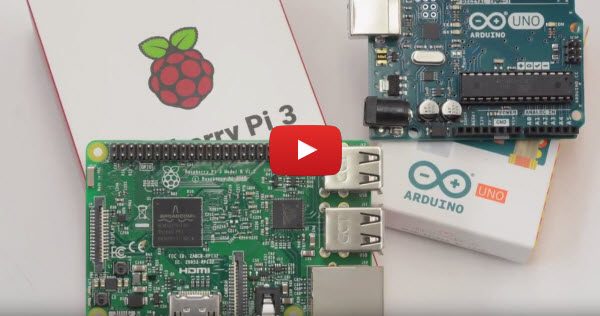In the August 2017 issue of Control Design, the cover story discussed how micro-controllers coming out of the “maker” world hope to someday challenge PLCs in industrial applications. The article makes for very interesting reading, but if a picture is worth 1000 words, a video must be worth 1000 pictures. Doug Reneker and the team that worked on the article have also created a video showing the demonstration in more detail, we’ll describe it briefly here.
This project wasn’t just a concept on paper, but was actually built and operated, so Doug had to make it all work. We now have the video courtesy of the author, and it’s posted on the AutomationDirect website, please click here or the image below to view it. The video is just a little more than three minutes, so it moves very quickly. You may have to watch it more than once to catch all the details, and you can also read on to glean some of the most important points. As the narration points out at the beginning of the video, controlling this simple flow loop was not an easy task for the Arduino.
“Our conclusion is that while the micro-controller can do the job, it takes additional hardware and more programming effort than a purpose-built industrial controller such as the BRX.”
The narrator reinforces this point several times in the course of the discussion:
“An Arduino does not handle the 4 to 20 mA current loops common to industrial field devices, and which our flow meter and control valve both use.
“Converting the output requires a sophisticated circuit, but it works.
“All the software to communicate with the devices and perform the PI calculations has to be written from scratch…
“We added a tiny display screen to see what’s happening, along with potentiometers to control the setpoint, plus the P and I factors.”
Completing all these tasks required a great deal of circuit design and programming. The Arduino controller worked, but the cost of implementing it in a normal company environment would be very high, given the many required hours of development time. Using it instead of a PLC would be difficult if not impossible to justify in normal commercial terms.
Using the BRX was much easier, even though Doug had no previous experience with a BRX, or any other kind of PLC for that matter. He’d never tried working with a ladder-logic program in his life. So how did this part of the project go?
“Connecting the field devices is easy because a 4 to 20 milliamp current loop is just one of the selectable communication protocols built in.
“The only programming necessary is a simple ladder logic routine, written using the Do-more Designer software downloaded from the website.
“When the loop is running, the Do-more software provides the interface to see what’s happening and make changes to settings…
“For new users, there are many resources and videos available online to show how basic programming is done.”
These comments describe a much different and far less difficult experience. The BRX is a tool designed specifically for industrial applications, no extra effort required, posing a stark contrast to the time and expense required to make the Arduino work in this simple yet very common industrial control application.
For more articles on programmable control, click here.



